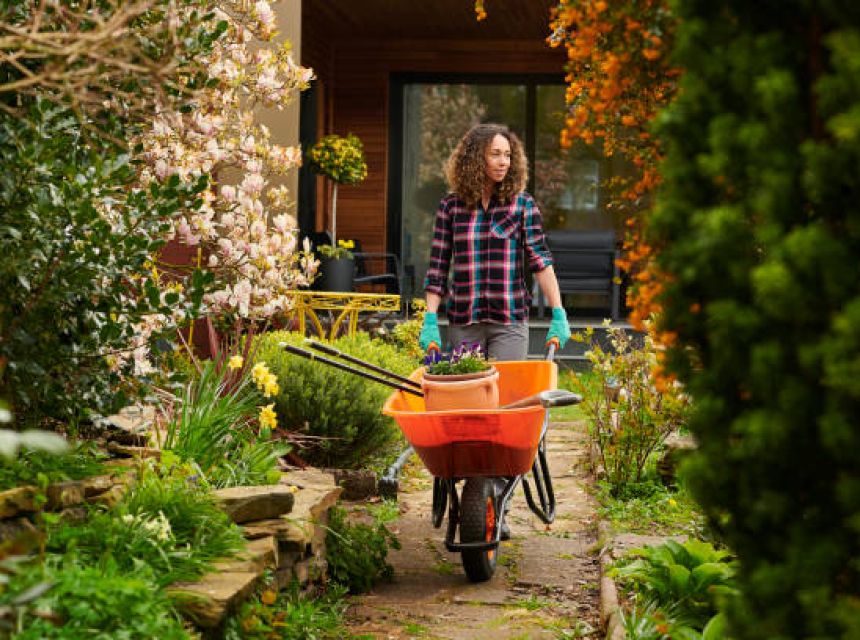How to Start a Spring Garden with Unique Techniques
Starting a spring garden is a fulfilling endeavor that combines practical planning with creative, experiential techniques. Here’s a detailed guide to launching your garden, incorporating both conventional and unique methods drawn from some of our seasoned gardening insights.
Plan Your Garden with Intention
Begin by selecting plants suited to your USDA Plant Hardiness Zone, which you can find at https://planthardiness.ars.usda.gov/ or through local extension offices (check out Bo’s first blog on https://bbsradio.com/blogentry/down-and-dirty-my-first-blog-and-nod-master-gardeners for more information).
Focus on what you and your family love to eat—greens like lettuce, kale, bok choy, endive, and radicchio, or root crops like beets, carrots, and radishes thrive in spring, and go from there. Sketch your garden on paper, calculating square footage (width × length) to optimize space and be mindful of how much space each variety you plant needs to thrive and produce an optimum harvest. There is a number of places to find spacing: plant tags (starts), seed package, gardening books or an online search will provide this information. There is also a great book for beginners and seasoned gardeners alike called All New Square Foot Gardening (Grow More in Less Space) by Mel Bartholomew… the name says it all.
Place taller crops like corn, tomatoes, or trellised cucumbers at the north end to prevent shading shorter plants like strawberries or herbs. Ensure 6+ hours of daily sunlight and easy water access, using drip irrigation or clay pots (ollas) for efficiency when possible.
Don’t forget that for small spaces you can grow an abundant garden of herbs, greens, or strawberries in pots on balconies or patios. Another option is to explore community gardens in your town or you can approach a neighbor who has an ‘unused’ yard and offer to share the harvest in return.
If you are just starting out in the world of gardening, or if you have just acquired a bit of land, it is always suggested to start small to ensure success, expanding each year.
Prepare Soil for Vitality
Healthy soil is the foundation of a thriving garden. Test soil pH (aim for 6.0–7.0) and nutrient levels using a home kit or extension service if you desire. Neither Vicki or I have ever done so and have had great success, the choice is yours.
As we approached in our first episode, it is imperative to enrich with compost or organic matter. This holds true especially when you start your first garden, but adding organic material to your beds each year with a method called ‘top dressing’ is also highly suggested. Feed the soil, feed the plant is the theory. When using animal manure as compost, please ensure that the material is well composted (for at least one year). The reasoning behind this is that the manure also contains urine which will burn your new plants, and uncomposted manure contains tons of weed seeds. I speak from experience! (Funny ~ Not funny 😉)
Wood chips make a wonderful mulch but avoid digging them into the soil, as this depletes nutrients, and the chips take much longer to break down into usable nutrients for your plants. You may also apply 3–4 inches of mulch like straw, leaves, or grass clippings on top to retain moisture, deter weeds, and mimic nature’s protective cover.
For new beds, use lasagna gardening (aka: Weedless Gardening – book by Lee Reich): layer cardboard or newsprint (avoid colored ink), add at least 4 – 6 inches of compost, plant directly into the compost – seeds or starts, and top with mulch. You can use this mention without weeding and loosen soil, we covered this method in our first show as well. This creates a nutrient-rich biosphere under the mulch, fostering soil health.
Select Seeds or Starts Strategically
Choose between seeds and seedlings based on your experience and timeline. Seeds are cost-effective for direct-sown crops like squash, zucchini, cucumbers, beets, carrots, and radishes, which prefer undisturbed roots. Check seed packets for planting depth, spacing, and zone compatibility, opting for organic heirloom varieties from reputable sources like Baker Creek Seed Company https://www.rareseeds.com/ or local suppliers like Snake River Seed Cooperative https://snakeriverseeds.com/ and Territorial Seeds https://territorialseed.com/ .
Seedlings (aka: starts) offer a head start but may experience transplant shock, taking 1–3 weeks to recover.
Always ensure plant tags match your zone. Many big-box stores bring plants in because they ‘look pretty’, but are not suitable for your region.
You may want to consider saving your own seeds from successful plants in your own garden! It’s your own personal “seed bank”! Select a hardy plant and let part of the plant mature, flower and go to seed. Plants like lettuce or greens are a good choice for beginning seed saving. Do this, and you may never have to purchase seeds again! Save and plant for future seasons. A win-win!
Plant with Care and Creativity
Depending on where you live, you may have to wait to plant until after the last frost, following local guidelines. You can find this information from your local Extension Office (see above for a link to find the closest office). Greens such as lettuces, spinach and kale are always this first to go into the ground in the spring.
Your Extension Office will usually have free information on what to plant, when or you can refer to the Farmer’s Almanac. Often a local, reputable garden centers will employ Master Gardeners or folks that have tons of experience and they are always happy to help you get your garden growing.
Space plants per seed packet instructions to avoid overcrowding. Water gently post-planting, using drip systems or ollas to deliver water to roots, especially in arid climates whenever possible. Apply mulch to conserve water and protect soil. (I know, that’s redundant, but oh so important!)
For strawberries, choose June-bearing for a single large harvest (ideal for canning) or everbearing for continuous fruit until frost. Cut runners to maintain mother plant vigor or propagate new plants by rooting runners in soil.
We’ve both experimented with a unique technique from The Ringing Cedars of Russia: place seeds in your mouth before planting to coat them with saliva, allegedly embedding your DNA to grow plants tailored to your health needs. This fosters a personal connection with your garden. Love your plants and they will love you back. They prove that with their abundant, healthful bounty.
Maintain with Mindfulness
Water consistently depending on the weather and climate where you garden. If you live in an arid region, your watering practices will differ from those who live somewhere like the Oregon Coast. Mulch heavily to conserve water and suppress weeds.
Practice succession planting—stagger crops like beets, radishes or greens every 2–3 weeks—for continuous harvests, especially if supplying others or canning. Monitor for pests, using natural remedies like hand-picking or companion planting with marigolds and nasturtiums, which also attract pollinators like bees and butterflies while deterring pests. These edible flowers also enhance garden beauty. Don’t be afraid to experiment by interplanting flowers which attract pollinators, check out books like The Pollinator Victory Garden by Kim Eierman or the many online resources for flowers that will work in your region.
Thin seedlings to prevent competition and fertilize with organic options as needed. Keep a journal to track successes, challenges, and unique experiments.
Explore Advanced Techniques
Incorporate permaculture principles to mimic nature’s ecosystems. Place daily-use herbs like basil, thyme, or chives near your door for easy access, while positioning fruit trees farther away, as they require less frequent visits. Permaculture emphasizes optimal placement for sunlight, water, and plant synergy, creating symbiotic relationships. For example, intersperse pollinator-attracting flowers among vegetables to boost yields.
Explore electroculture, a lesser-known method involving electrical or magnetic fields (ether) to enhance plant growth. Though not detailed here, it’s a powerful technique to research for future seasons. These approaches deepen your garden’s resilience and productivity. We will have a show on both subjects soon, so stay tuned to Down and Dirty for more information.
Nurture a Symbiotic Connection
Gardening is as much about nurturing yourself as it is about growing plants. Start small to build confidence, whether on a balcony with potted greens or an acre with diverse crops. Engage mindfully—walk barefoot, observe bugs and birds, and let the garden ground you. The symbiotic exchange between you and your plants fosters well-being, shutting out modern distractions. Experiment with techniques like electroculture or seed-DNA bonding to personalize your experience. As you tend your garden, it nurtures you, creating a vibrant ecosystem that reflects your creativity and care.
***Please remember that if you have any specific questions you would like to ask Vicki and me about gardening, canning, herbs, etc., feel free to use the email that BBS provides on our page. You can find use on bbsradio.com/DownandDirty.
A few of my favorite books for getting your garden growing:
The Vegetable Gardeners Bible by Ed C Smith (great overall book)
Carrots Love Tomatoes by Louise Riotte (companion planting
Seed Starters Manuel by Nancy Bubel (all things seed starting)









